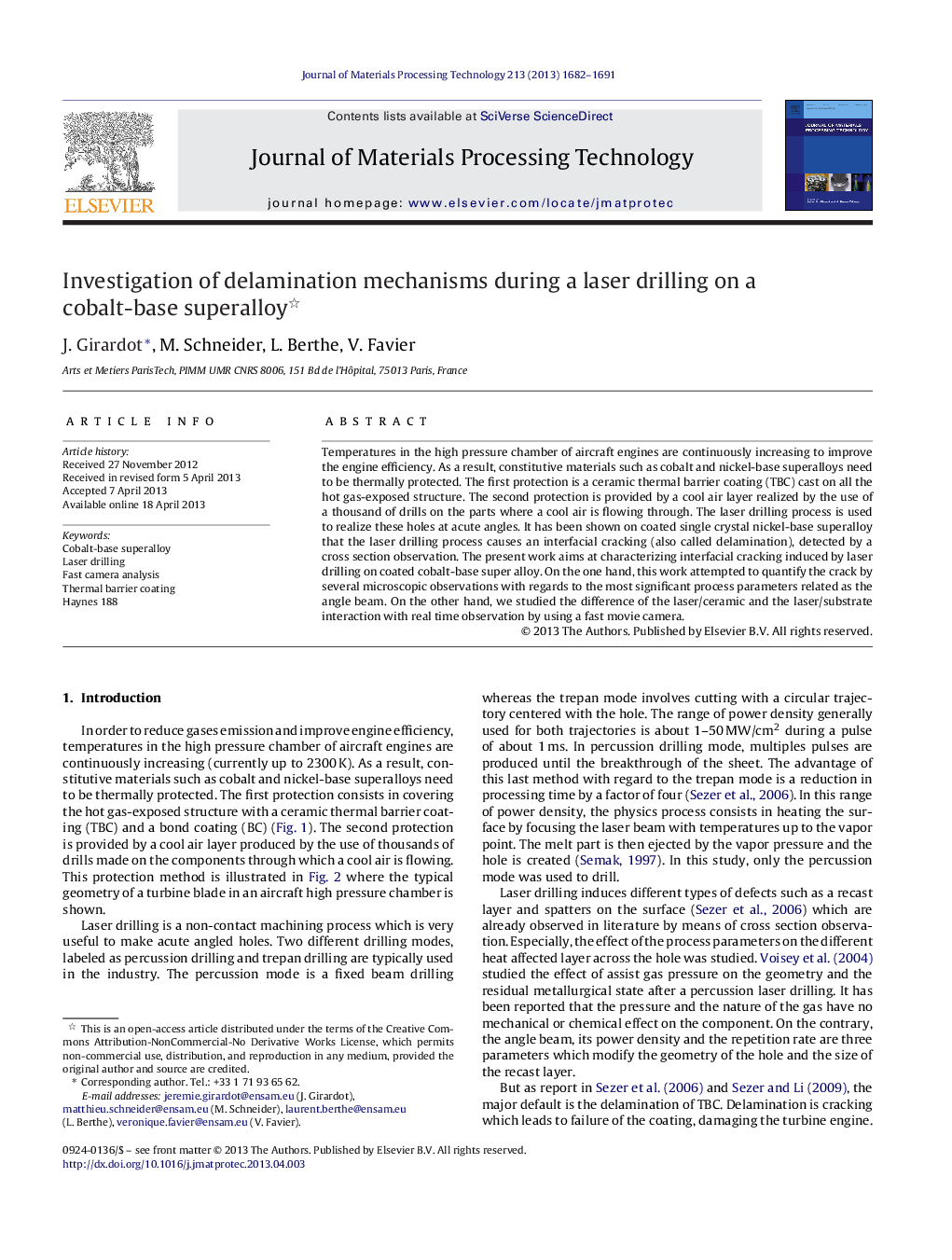| Article ID | Journal | Published Year | Pages | File Type |
|---|---|---|---|---|
| 10417626 | Journal of Materials Processing Technology | 2013 | 10 Pages |
Abstract
Temperatures in the high pressure chamber of aircraft engines are continuously increasing to improve the engine efficiency. As a result, constitutive materials such as cobalt and nickel-base superalloys need to be thermally protected. The first protection is a ceramic thermal barrier coating (TBC) cast on all the hot gas-exposed structure. The second protection is provided by a cool air layer realized by the use of a thousand of drills on the parts where a cool air is flowing through. The laser drilling process is used to realize these holes at acute angles. It has been shown on coated single crystal nickel-base superalloy that the laser drilling process causes an interfacial cracking (also called delamination), detected by a cross section observation. The present work aims at characterizing interfacial cracking induced by laser drilling on coated cobalt-base super alloy. On the one hand, this work attempted to quantify the crack by several microscopic observations with regards to the most significant process parameters related as the angle beam. On the other hand, we studied the difference of the laser/ceramic and the laser/substrate interaction with real time observation by using a fast movie camera.
Related Topics
Physical Sciences and Engineering
Engineering
Industrial and Manufacturing Engineering
Authors
J. Girardot, M. Schneider, L. Berthe, V. Favier,
